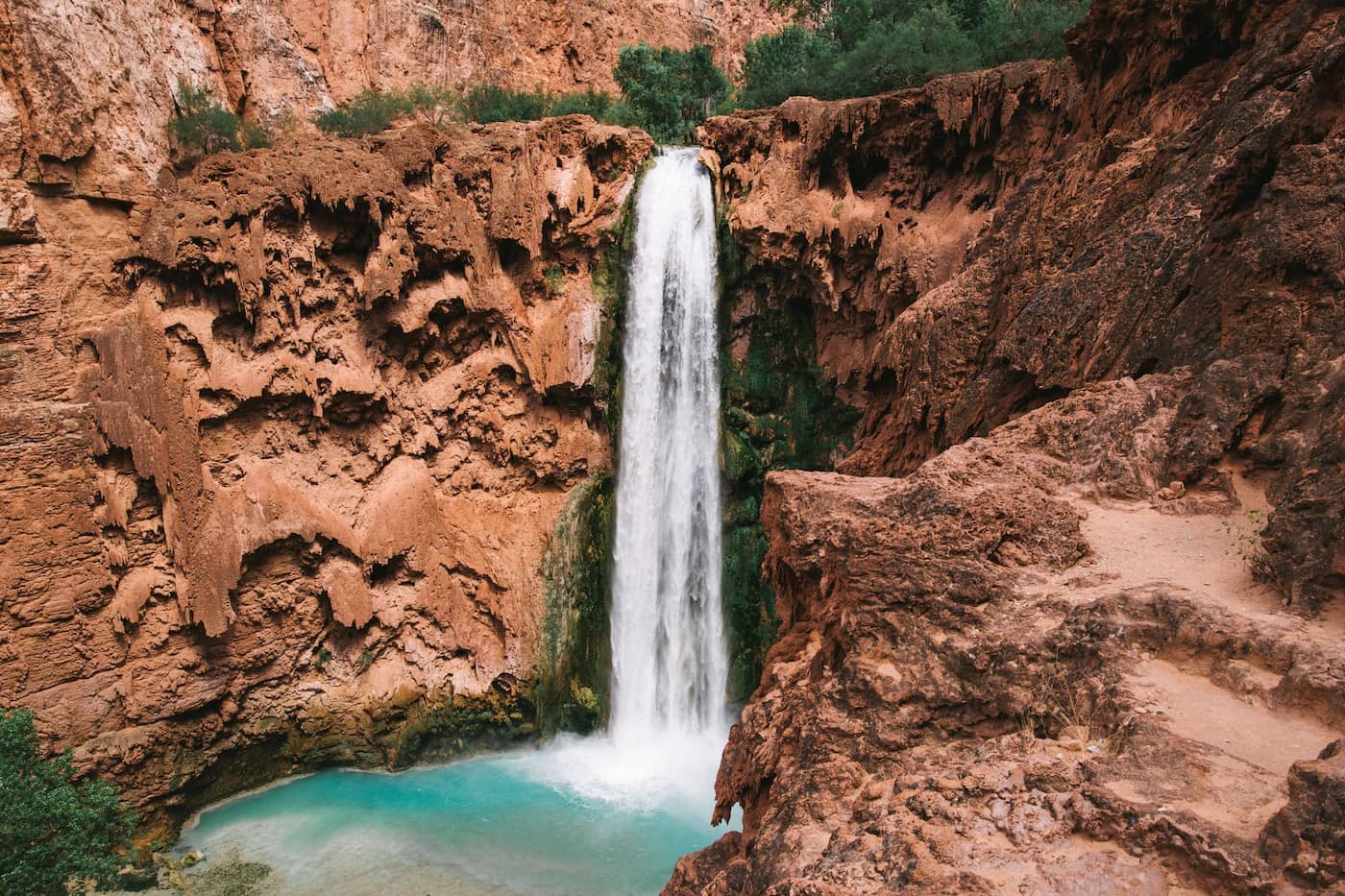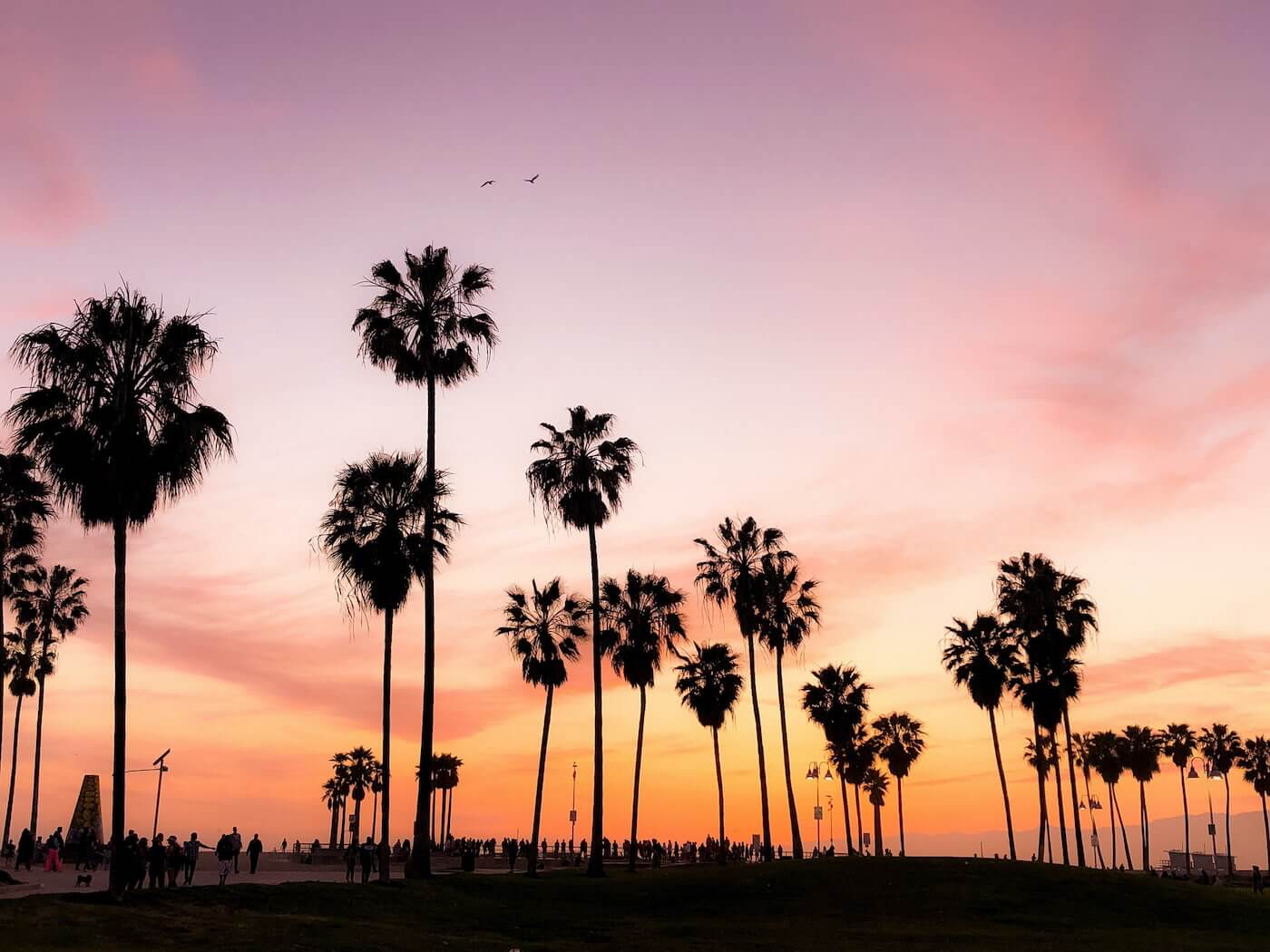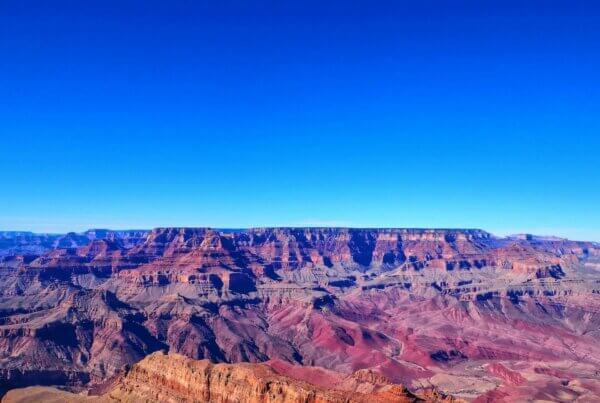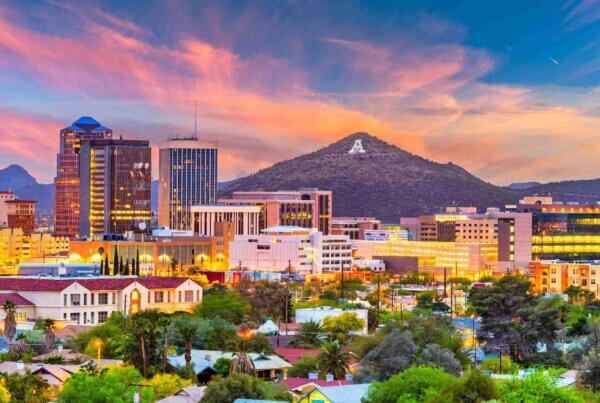Arizona is often associated with its arid desert landscape and iconic canyons. It might not be the first place that comes to mind when thinking of waterfalls. However, this diverse southwestern state is home to a surprising array of stunning waterfalls that beckon nature enthusiasts and adventure seekers alike. From secluded oasis-like retreats tucked away in remote canyons to cascades framed by towering cliffs, Arizona’s waterfalls offer a captivating contrast to its arid surroundings. With their natural beauty and tranquil ambiance, these hidden gems are often a great escape and the perfect spot to relax and reflect.
10. Tonto Natural Bridge Falls
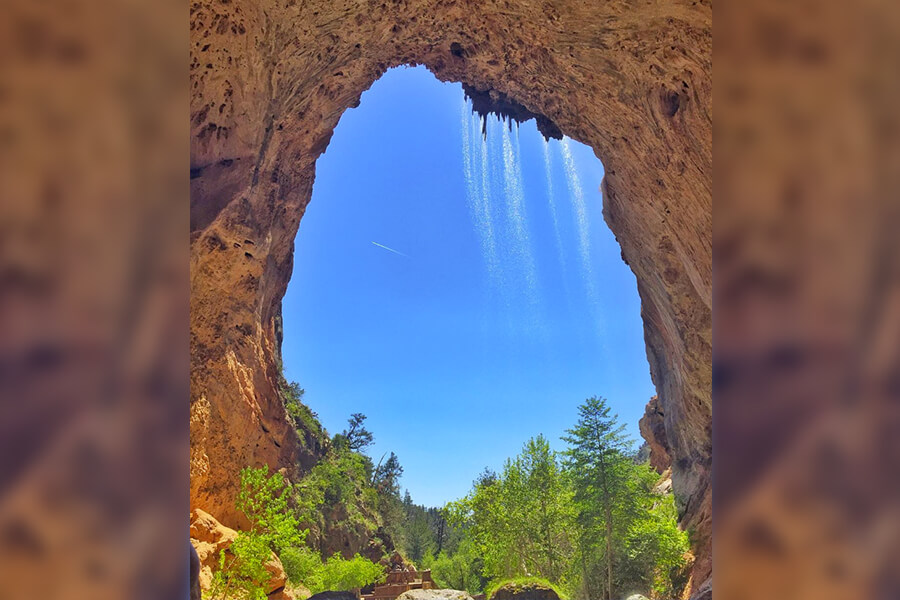
(image via Instagram)
This waterfall is located in Payson, AZ, close to Ellison Creek waterfall. Tonto Natural Bridge was discovered by prospector David Gowan, who hid there from pursuers and eventually convinced his family to move to the valley below it. It’s thought to be the largest natural travertine bridge in the world, and just 300 feet down the trail from it is a cave with a little waterfall pouring over the top. This isn’t an enormous, pounding fall; however, it does provide a serene experience as you view the world from its enormous cave mouth.
9. White Tank Mountain Waterfall
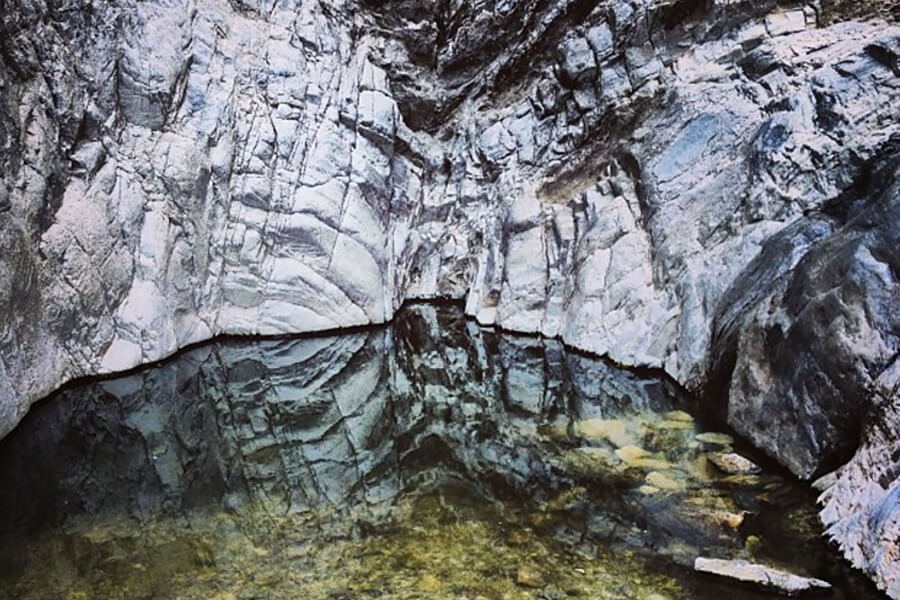
(image via Instagram)
This waterfall doesn’t have an official name, and the trail leading up to it is simply called “Waterfall Trail” (not terrifically helpful if you’re trying to search for it online). But, that just means that its beauty can speak for itself. The trail is moderate in difficulty, perfect for families, and ends in a green, secluded pool. If you go during the summer rainy season, it has a pretty significant drop feeding into it.
8. Ellison Creek Waterfall
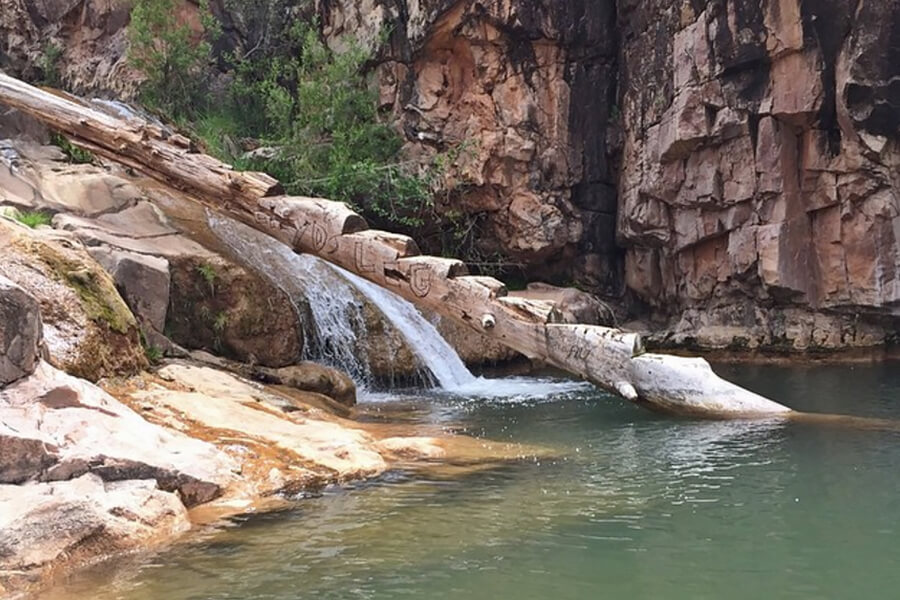
(image via Instagram)
Referred to as “Staircase Waterfall” because of its multiple “steps” of falls, this is a beautiful waterfall with several swimming holes. (There’s also a weird step-shaped log nearby.) There’s a fairly difficult hike to and from the waterfall, but it is not dangerously so. It gets pretty crowded, so if you want a little elbow room, you might want to arrive earlier in the day.
7. Seven Falls
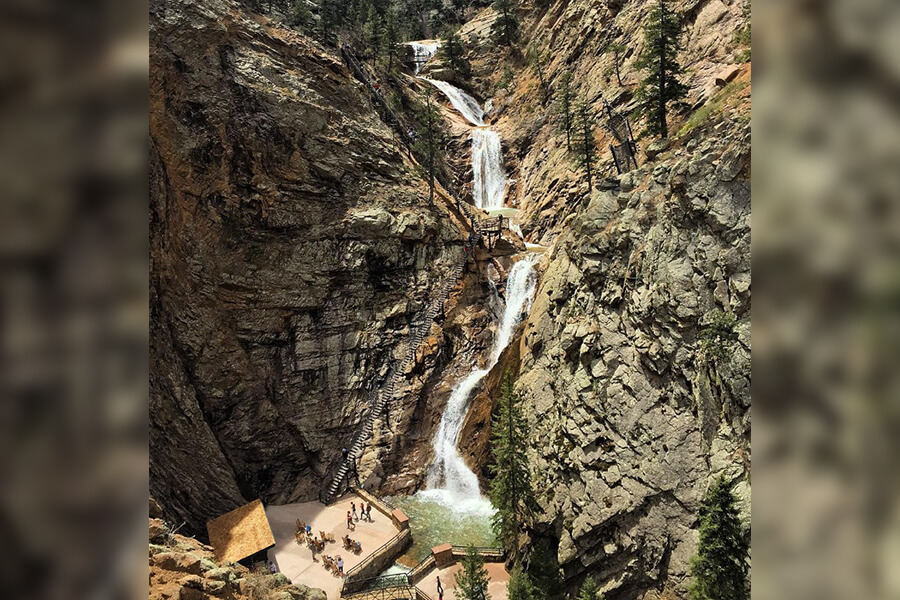
(image via Instagram)
Seven Falls is located along Bear Canyon Trail, about 1.7 miles from the Sabino Canyon visitors center. The hike is rocky, but not too treacherous. At the end, you’re treated to a gorgeous series of tumbles and pools as the water descends what looks like giant steps. If you’re really up for a hike, you can take the full Seven Falls Trail, which is about 8 miles long but mercifully moderate in difficulty.
6. Fossil Creek Falls

(image via Flickr)
Fossil Creek is a class of waterfall all its own. Fed by 70-degree hot springs, the creek is full of minerals that make its water striking. It gushes at a whopping 20,000 gallons/minute! The waterfall is only a couple miles’ hike away and empties into a large swimming pool that tends to be pretty popular. (Note that the water in the pool may be cooler or warmer than 70 degrees, based on its time spent winding down the creek.)
5. Workman Creek Falls

(image via Instagram)
If all of this hiking sounds exhausting, or simply can’t be done, there’s good news along Workman Creek. Here you can drive right up to a gorgeous view of a 200-foot waterfall in Tonto National Forest. The water here is clear, and it courses through beautiful terrain. You can fish, and the Forest Service even stocks it a couple of times a year. Warning: you might not want to eat any fish that you catch. Uranium was mined here from the ’50s-’70s. While being here is safe, spelunking through the mines isn’t recommended, nor is chowing down on the local fauna.
4. Havasu Falls
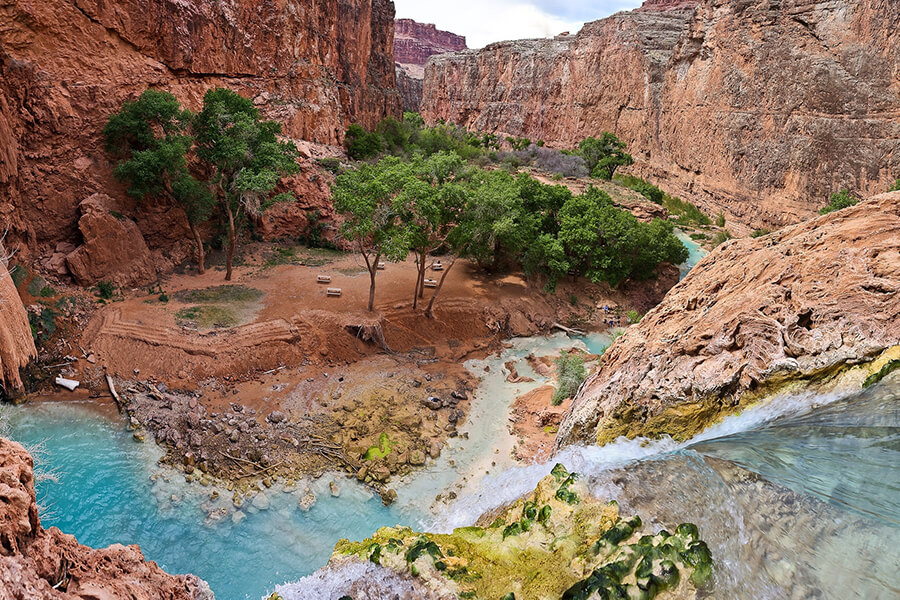
(image via Flickr)
Tumbling over the Grand Canyon and flowing through the Havasupai tribal lands, Havasu Falls drops 98 feet into Havasu Creek. The water’s large concentration of calcium carbonate gives it a gorgeous, vivid blue-green color and helps form some of the natural dams along the falls. Before a flood in 1910, there were a ton of streams flowing over the edge, and the place was called Bridal Veil Falls. But, even with the change in scenery, this is one of the most visited falls in the state. (Plus, it’s only about a mile from Mooney Falls.)
3. Navajo Falls
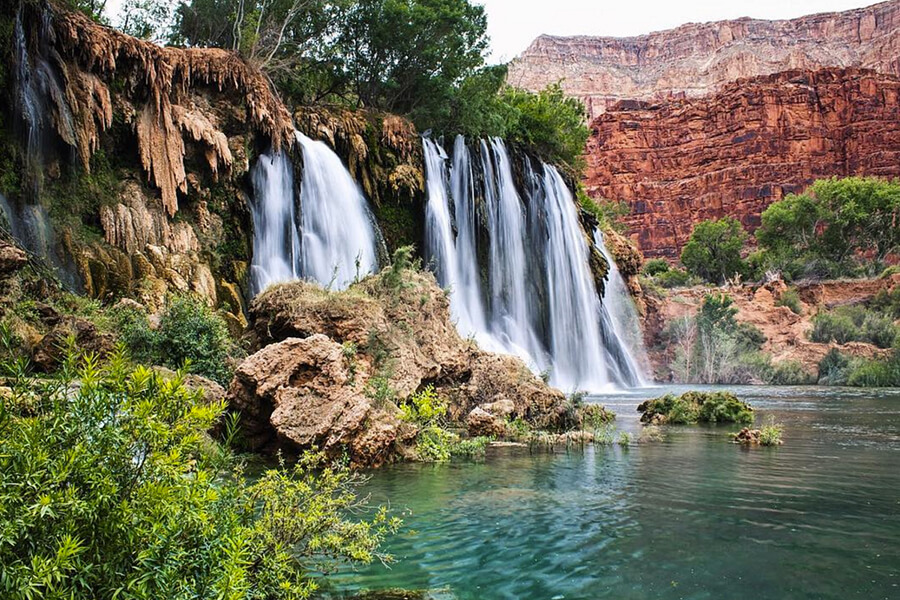
(image via Instagram)
Navajo Falls is near Supai, in the Havasu Canyon. In 2008, a flash flood ripped through the area, completely changing the landscape. Among other things, the flood gave birth to this newcomer. While other falls in the area suffered as the water diverted after the flood, Navajo Falls stayed gorgeous, and it’s the first waterfall you see as you walk from Supai to the campground, so you can’t miss it!
2. Mooney Falls
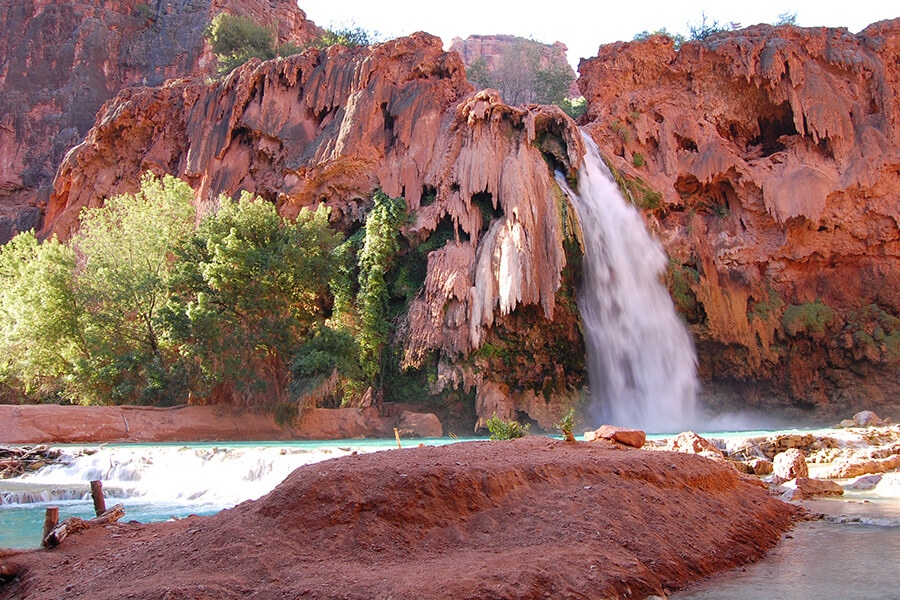
(image via Flickr)
Mooney Falls is located on the Havasupai reservation. Its high drop tumbles into a pool of water with such an intense sky-blue color it looks like a painting! While the falls are gorgeous, they’re a little hard to get to, as the descent is pretty steep. If you’re traveling with kids under 10 or so, it might be a little too much. But if you can make it, it’s worth the trek.
1. Grand Falls

(image via Instagram)
Grand Falls is located 30 miles outside of Flagstaff in the Navajo Nation. This 185-foot waterfall system is actually taller than Niagara, and the thick muddiness of the water certainly makes it visually unique. Unfortunately, the reason people don’t flock here as opposed to Niagara is that the falls aren’t always going. When there’s snowmelt or a monsoon rain to be carried, Grand Falls is…well, grand. The rest of the time, it’s a pretty cool cliff face, but not much more.


